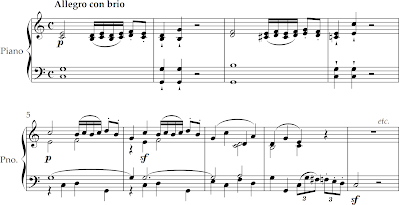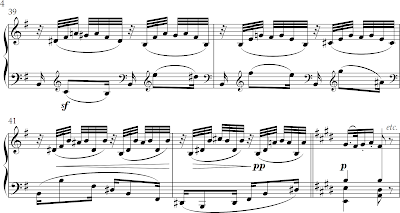CLXXXVIII. BEETHOVEN, Ludwig van (1770-1827)
Beethoven had only arrived in Vienna a few years earlier, and just a year prior to composing this mighty early work, his teacher Haydn had departed for England.
Apparently, Haydn wanted Beethoven to engrave his manuscripts with the words "Pupil of Haydn." Though their relationship was apparently stormy at this point (LvB once declared that he "learned nothing from Haydn"!), the three Opus 2 sonatas are dedicated to him.
**
It is often convenient for music historians to divide all of Beethoven's music into the three well-known periods: Early (1792-1806), Middle (1806-1814) and Late (1814-1827). Unfortunately, this is an ineffective way at looking at Beethoven's evolution of compositional processes.
Even worse, some further muddy the waters by using parallel terms for these periods: "Classical," "Romantic," and "Late Romantic."
So in this post, we look at an early work (he was 25) which surely was meant to display his incredible talents as a virtuoso pianist -- but which, in historical retrospective, shows us his blazing early compositional skills.
The First Symphony (Post LX) was still five years in the future!
**
First Movement
Secondary theme in G Minor/D Minor
before landing on the traditional dominant (G):
Then a hand-busting arpeggiated section, resolving on the super-tonic (D):
Second Movement
Moving to E Major (the dominant of the relative minor -- A), Beethoven presents a simple, beautiful theme -- and then see how -- moving to E Minor -- he extends it into something which might have come from one of his later periods, with beautiful cross-hand strokes ...
Third Movement
A typical Beethoven scherzo, with a droll, staccato character:
a Trio with triplets:
a Coda ends the movement on a tritone substitute authentic cadence -- a fancy way of explaining the D-Flat in the bass, which is the tritone of the dominant G!
Fourth Movement
A typical rondo:
with an extraordinary finish. Check out the triple trills!



















No comments:
Post a Comment